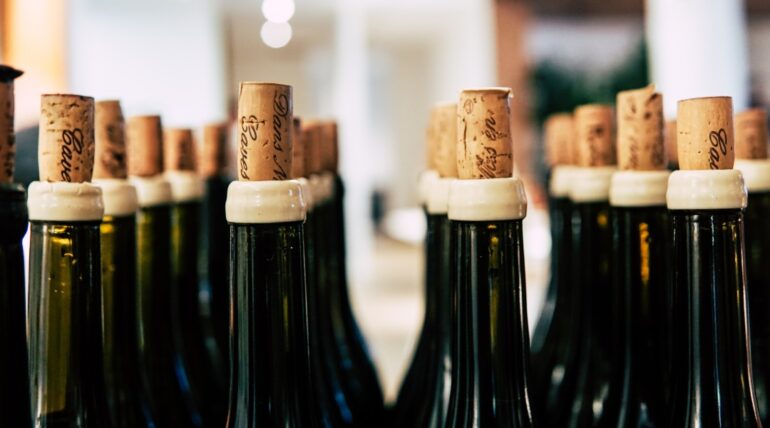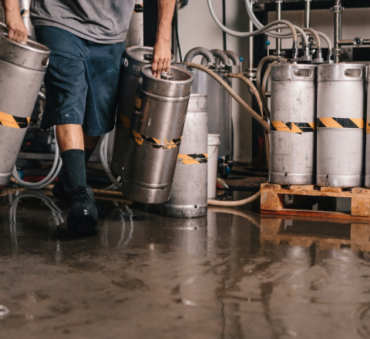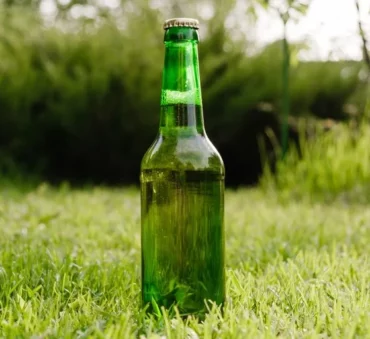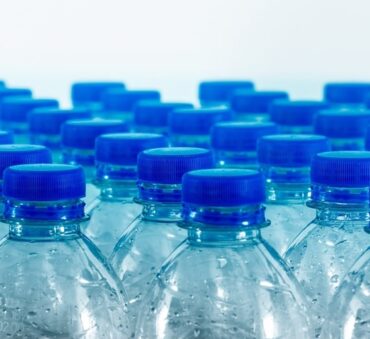Wine is often celebrated as a symbol of sophistication and indulgence. However, it occasionally finds itself at the center of a very different story – the need for disposal.
From cases of excess, faulty production, or simply the passage of time, wine disposal is an aspect of the industry that’s less discussed but equally important. Recent incidents include the unpermitted submersion of wine crates off the coast of Santa Barbara and France’s efforts to destroy surplus wine to support struggling producers. This highlights the critical need for responsible wine bottle disposal practices.
So, how do you dispose of old or bad wine?
Let’s discover the various aspects of wine disposal, exploring its environmental impact, legal considerations, and sustainable solutions.
Key Takeaways
- Proper wine disposal, especially in larger quantities, is crucial to prevent environmental harm and legal consequences. Avoid pouring it down the drain or dumping it into the environment.
- Understanding the indicators of unusable wine, such as shelf life, quality deterioration, production errors, and faulty products, helps in responsible disposal.
- Consider sustainable options like vinegar production, industrial alcohol distillation, composting for agriculture, or working with specialized wine destruction services to reduce waste and environmental impact.
- Always adhere to state and federal disposal regulations when disposing of wine and avoid unverified or non-certified destruction services.
The Implications of Improper Wine Disposal
When wine reaches the end of its life cycle, improper disposal can have significant environmental and legal consequences.
Here are some of the implications that improper wine disposal can lead to:
Environmental Consequences
When not disposed of properly, especially in large quantities, wine can seep into the soil and water systems. This can:
- Lead to soil contamination
- Harm aquatic life
- Negatively impact ecosystems
To avoid such environmental hazards, it’s crucial to choose disposal methods that prevent wine from entering natural habitats.
Legal Implications
The disposal of wine is not exempt from legal regulations. For instance, wine on bonded wine premises may only be destroyed on or off wine premises by the proprietor with proper authorization.
This authorization requires an application detailing the:
- Kind of wine
- Alcohol content
- Volume of wine to be destroyed
- Location of destruction
- Reason for destruction
Furthermore, destruction often needs to be supervised by an appropriate TTB (Alcohol and Tobacco Tax and Trade Bureau) officer.
Economic Implications
Distributing wine that is past its prime or tainted in some way can have severe economic repercussions. For example, it can lead to:
- Financial losses: If consumers purchase wine that doesn’t meet quality standards, it may lead to recalls and refunds, hitting your bottom line directly.
- Legal issues: If customers pursue legal action due to subpar product quality, this can further dent your financial resources. The cost of legal battles and settlements can be exorbitant.
- Loss of trust: When consumers encounter substandard wine bearing your label, this can inevitably lead to reduced sales and a struggle to regain your market standing.
Brand Implications
The consequences of improper wine disposal go beyond immediate financial losses. The reputation of your brand is at stake.
In an age where consumer opinions and reviews can spread rapidly online, a single instance of distributing poor-quality wine can tarnish your brand image irreparably. This can make it challenging to compete in a market where trust is paramount.
Identifying Unusable Wine
Whether you’re a winemaker, distributor, or wine enthusiast, understanding the key indicators of unusable bottles is crucial to ensuring that only the finest wines make it to your glass or the market.
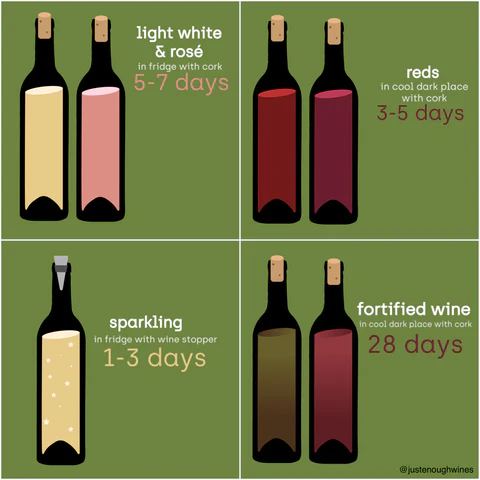
Shelf Life and Expiry
There are a few factors affecting wine shelf life, including:
- Exposure to light: Wine is sensitive to light, particularly UV rays. Prolonged exposure can cause “lightstruck” flavors, which can ruin the taste. To avoid this, keep wine in dark, cool spaces.
- Temperature variations: Wine dislikes temperature fluctuations. Ideally, it should be stored between 45°F to 65°F. Extremes in heat or cold can lead to premature aging or spoilage.
- Improper sealing: A cork is wine’s armor. If the seal is compromised, air can seep in and spoil the wine. Inspect corks for any leakage or seepage.
Pro tip: In some cases, laboratory testing can provide specific data on the wine’s condition. This may involve assessing acidity levels, volatile acidity, sulfur dioxide content, or microbiological analysis.
Quality Deterioration
Wine’s allure lies in its evolving complexity, but sometimes, it evolves beyond enjoyment, losing its qualities. Here are the main signs of quality deterioration:
- Change in color: Watch for shifts towards amber or brown in white wines and brick-red or brown in reds.
- Altered odor: Spoiled wine may emit off-putting scents like vinegar or wet cardboard.
- Taste: Spoiled wine often tastes flat or exhibits undesirable flavors like bitterness or excessive acidity.
- Sediment formation: While not always a sign of spoilage, excessive sediment in young wines could indicate problems.
Keep in mind: Spoiled wine may not be dangerous, but it can cause discomfort. For businesses, serving or selling spoiled wine can lead to customer dissatisfaction. To avoid this, monitor your wine’s quality regularly and ensure its properly stored.
Production Errors
Even the most carefully crafted wines can fall victim to production errors like:
- Contamination: Contamination can occur at various stages of winemaking, from grape picking to bottling. Microbial contamination, chemical pollutants, or foreign matter can all compromise a wine’s safety and flavor.
- Fermentation faults: Yeast and fermentation are wine’s best friends, but when something goes awry, it can lead to unpleasant flavors and spoilage. Issues like stuck fermentation or the growth of unwanted microorganisms can cause these faults.
- Improper blending: Errors in this intricate process can result in a lack of balance or off-putting tastes. Mixing different batches or varietals without precision can lead to an unusable final product.
To avoid these pitfalls, wineries must implement rigorous quality control measures, including regular testing, meticulous sanitation, and a keen eye for detail.
Faulty Product
It’s essential to recognize and address issues like:
- Cork taint: This common problem occurs when the wine meets contaminated cork. It imparts a musty, moldy smell and taste, known as “corked” wine. To detect cork taint, simply sniff the wine – if it smells like a damp basement, it’s tainted.
- Bottle variation: Sometimes, inconsistencies occur between bottles from the same batch. Variations in taste, aroma, or color can be off-putting to consumers. Regular quality control checks can help identify these issues before wine reaches the market.
- Heat damage: Exposure to high temperatures, especially during transportation or storage, can cause wine to spoil. Heat-damaged wine may taste stewed or raisiny. Careful handling and climate-controlled storage can prevent this problem.
Sustainable Wine Disposal Methods
Sustainable wine disposal methods not only help reduce waste but also contribute to the conservation of valuable resources.
Sustainable wine disposal methods not only help reduce waste but also contribute to the conservation of valuable resources.
Let’s delve into the best ways to dispose of old wine.
Vinegar Production
Did you know that many vinegar producers can effectively convert wine into vinegar?
By donating expired or unusable wine, you not only minimize waste but also contribute to the creation of a versatile culinary ingredient. Vinegar has a multitude of uses in both cooking and cleaning, making it a valuable byproduct of responsible wine disposal.
Industrial Alcohol
Another sustainable method for disposing of surplus or unusable wine is through the production of industrial-grade alcohol. This process involves distilling large volumes of wine and converting it into alcohol.
Industrial alcohol can be used in the production of hand sanitizers, cleaning products, and even as a fuel additive. This way, wineries can reduce waste while contributing to the production of essential industrial materials, aligning with eco-friendly practices.
Composting for Agriculture
Wine can act as a nutrient-rich additive to compost, enhancing its fertility.
This compost can then be used to enrich soil in agriculture, promoting healthier crop growth and reducing the need for synthetic fertilizers.
This not only minimizes waste but also fosters a symbiotic relationship between the wine industry and local agriculture, demonstrating a commitment to environmental responsibility.
Wine Destruction Services
Navigating the complexities of wine disposal, which is strictly controlled by law, requires a specialized approach.
This is where wine destruction services, such as Shapiro, come into play. We are experts in hazardous liquid waste management with a nationwide network of qualified partners. Additionally, we possess the knowledge and resources to handle wine disposal efficiently and legally.
Partnering with Shapiro means you can rest assured that the entire wine disposal process will be handled with precision.
How Do You Dispose of Wine Bottles: What to Avoid
In the world of wine disposal, certain practices should be avoided due to their detrimental impact on the environment, legal repercussions, and damage to a brand’s reputation. These include:
Illicit Dumping
Dumping wine carelessly, whether down the drain, into the ground, or even into water bodies, is a grave offense with severe consequences.
Not only does it harm aquatic ecosystems and soil quality, but it also violates environmental laws. The reputational damage incurred by companies engaging in such practices can be extensive as consumers increasingly demand eco-conscious choices.
Non-Compliance
Regulatory bodies have strict guidelines on how wine should be handled and disposed of, primarily to safeguard the environment and public health. Failing to adhere to these regulations can lead to hefty fines, legal entanglements, and a tarnished corporate image.
Unverified Services
Relying on unverified or non-certified wine destruction services can be a costly mistake. These services might not have the expertise or compliance measures necessary for proper wine disposal.
Businesses must exercise due diligence in selecting reputable and certified providers to ensure the process aligns with the law and environmental standards.
Wasteful Practices
Failing to explore sustainable wine disposal methods is not only wasteful but also environmentally irresponsible. Recycling or composting wine, when feasible, is an eco-friendly option that minimizes waste and promotes resource conservation. Ignoring these practices not only harms the planet but can also lead to unnecessary financial losses.
How to Dispose of Wine: Final Words
Responsible wine disposal is not just about adhering to the law. It’s also about safeguarding the environment and preserving a brand’s reputation.
By avoiding illicit dumping, complying with regulations, and using verified services like Shapiro, businesses can navigate alcohol disposal challenges conscientiously and sustainably.
Contact us today to learn how we can help you dispose of liquid waste responsibly and hassle-free.
Wine Disposal FAQs
Still have questions on wine disposal? Here are some commonly asked questions and their answers:
Yes, wine can expire.
While some wines are designed to age gracefully, most are meant for consumption within a few years.
Over time, factors like temperature, humidity, and exposure to air can cause wine to deteriorate in quality. It won’t necessarily become toxic, but it may be less enjoyable to drink.
Generally, old wine is not considered toxic or hazardous waste.
However, improper disposal of wine in large quantities can have environmental repercussions and lead to legal consequences. It’s essential to follow proper disposal methods to prevent such issues.
Pouring old wine down the drain is generally acceptable in small quantities, especially if it’s in a household setting.
However, it’s essential to check your local regulations, as some areas have restrictions on pouring alcohol down the drain. When dealing with larger quantities, it’s advisable to explore more responsible alcohol disposal methods to avoid potential environmental harm.
Wine storage depends on the type of wine:
Red wines are typically stored at slightly cooler than room temperature, around 55°F.
White wines and sparkling wines are often stored at cooler temperatures, between 45-55°F.
Once opened, it’s a good idea to refrigerate wine to preserve its freshness, but it should be consumed within a few days for the best taste.
Baily Ramsey, an accomplished marketing specialist, brings a unique blend of anthropological insight and marketing finesse to the digital landscape. Specializing in educational content creation, she creates content for various industries, with a particular interest in environmental initiatives.
